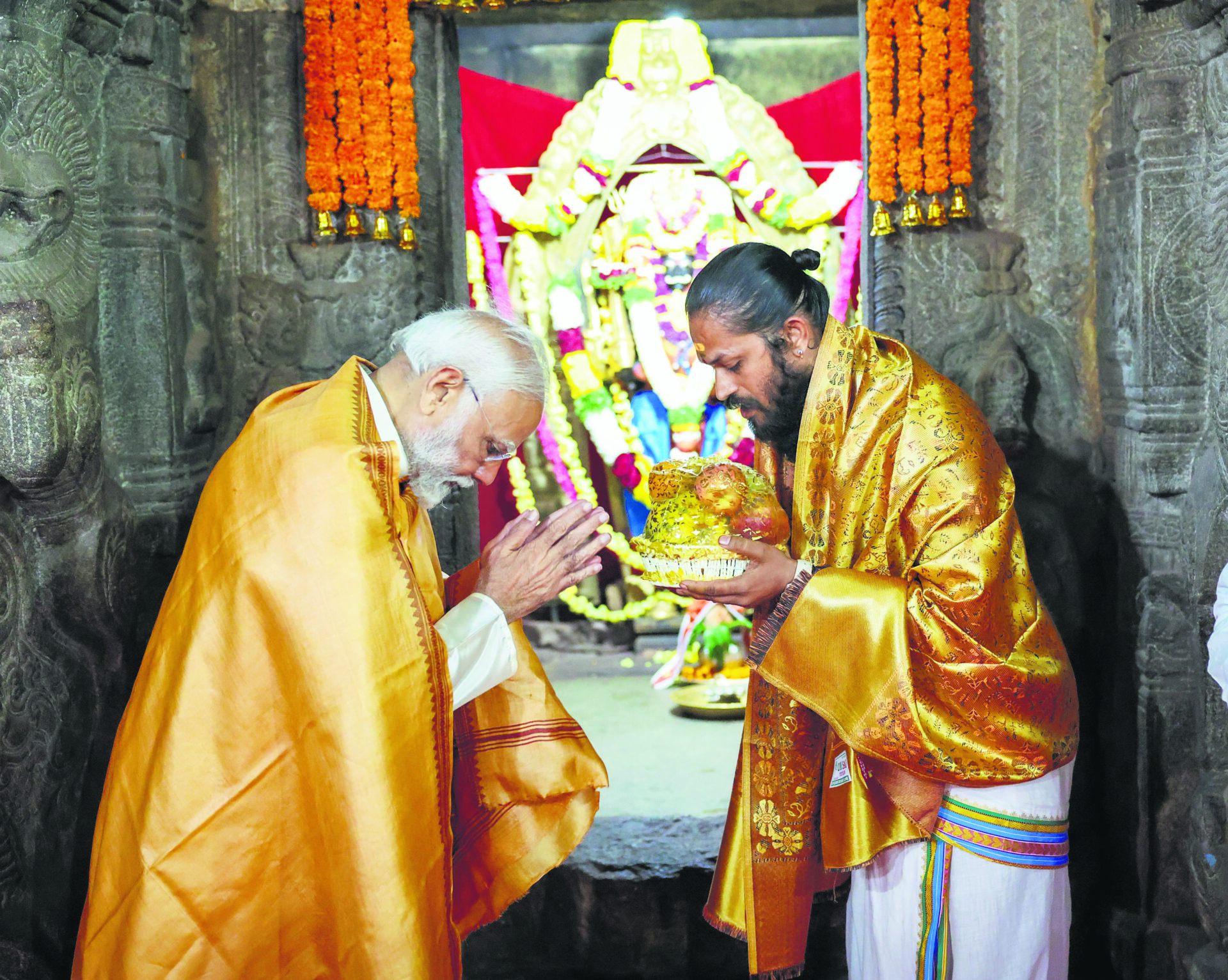All the temples the Prime Minister visited are connected to Lord Ram.
On 16 January, Prime Minister Narendra Modi offered prayers at the Veerabhadra temple in Andhra Pradesh and on the 17th, he visited the Triprayar Sree Rama Swami Temple in Thrissur, Kerala. On Saturday, 20 January, he was at the Srirangam and Rameswaram temples in Tamil Nadu. His pilgrimage took place ahead of the pran pratistha or the consecration ceremony of the Ram Lalla idol at the Ram Mandir in Ayodhya on Monday, 22 January. That all these temples are connected to Lord Ram makes the PM’s pilgrimage assume special significance.
LEGENDS OF THESE SOUTH TEMPLES
The Veerabhadra temple, dedicated to Lord Shiva in his fiery form, is located in Lepakshi, Andhra Pradesh. Legend has it that bird king Jatayu, who fought to rescue Sita from Ravana, fell down at Lepakshi when his wings were clipped by Ravana. Lord Ram found Jatayu in a dying state
In Thrissur, there is the Triprayar Sree Rama Swami Temple which is dedicated to Lord Ram. The idol here is seen in the chaturbhuj Vishnu form, having four arms holding a conch, a disc, a garland, and a bow, respectively. Legend has it that Lord Krishna worshipped Lord Ram at Dwaraka and Lord Ram’s deity submerged in the sea when Lord Krishna left his mortal body. The deity was found by some local fishermen in Chettuva, Kerala, and Vakkayil Kaimal, the local ruler at the time, built a temple at Thrissur for Lord Ram.
The Ranganathaswamy temple in Srirangam, Tiruchiraplli, is dedicated to Lord Vishnu in the form of Ranganatha. Legend has it that Lord Brahma worshipped Lord Ranganatha (a form of Lord Vishnu) in Satyaloka (the heavens). The idol was then handed over to King Ikshvaku on Bhuloka (the earth), for the tapasya he had performed to bring Lord Ranganatha to Ayodhya. Lord Ranganatha became the family deity of King Ikshvaku and Lord Ram started to worship him too. When Lord Ram came back from his exile, he gifted Lord Ranganatha’s idol to Vibhishana who placed it in Srirangam for his daily rituals on his way to Lanka. He was then unable to move the idol and Lord Vishnu is said to have appeared before him and told him this would be his residing place and he could come and worship him here anytime.
Meanwhile, at Rameswaram in Tamil Nadu, there is the Ramanathaswamy temple dedicated to Lord Shiva. It is said that Lord Ram arrived at Rameswaram from Lanka after his victory against Ravana. Lord Ram wanted to pray to Lord Shiva to absolve him of the sins he had committed during the war with Ravana. He instructed Hanuman to bring a lingam (idol of Lord Shiva) from the Himalayas but it took time, so Sita created a lingam out of sand from the seashore for his worship. This legend also finds a place in Valmiki’s Ramayana.
IMPORTANT TO RAM MANDIR
There is an inherent connection of these four holy Hindu places with Lord Ram. His journey to and from Lanka took him through Lepakshi, Srirangam and Rameswaram. Ayodhya was Lord Ram’s kingdom which he returned to after 14 years in exile during which he went to Lanka to kill Ravana and save Sita.
Vedic scholar Dushyanth Sridhar explains: “The family deity of Ram was earlier called Narayana or Jagannatha (in Ayodhya). This was gifted by Ram to Vibhishana who placed the Divya Murti in Srirangam (by the banks of Cauvery) in Tamil Nadu. From then on, he is referred to as Ranganatha. Similarly, for Krishna, the family deity was carried by Guru and Vayu (upon the advice of Uddhava) and established in Guruvayur in Kerala. Thus, the family deities of Rama and Krishna are in Srirangam and Guruvayur respectively.”
Sundar Bhattar, chief priest of Ranganathaswamy Temple, Srirangam, spoke about how Srirangam is one of the holiest places in the universe. He told a news agency, “Ayodhya is very closely related to Srirangam. Srirangam is one of the islands. One side is the Cauvery river and the other side is the Kollidam river. In Ayodhya, there is the Sarayu river and here, it is Cauvery. Both are holy rivers. All the persons going to Ayodhya come to Srirangam. Prayers in Srirangam and Ayodhya are very closely related to our Hindu dharma.”
The four South temples that PM Modi visited are important in Hinduism and while they are connected to Lord Ram, they also hold religious significance otherwise.

